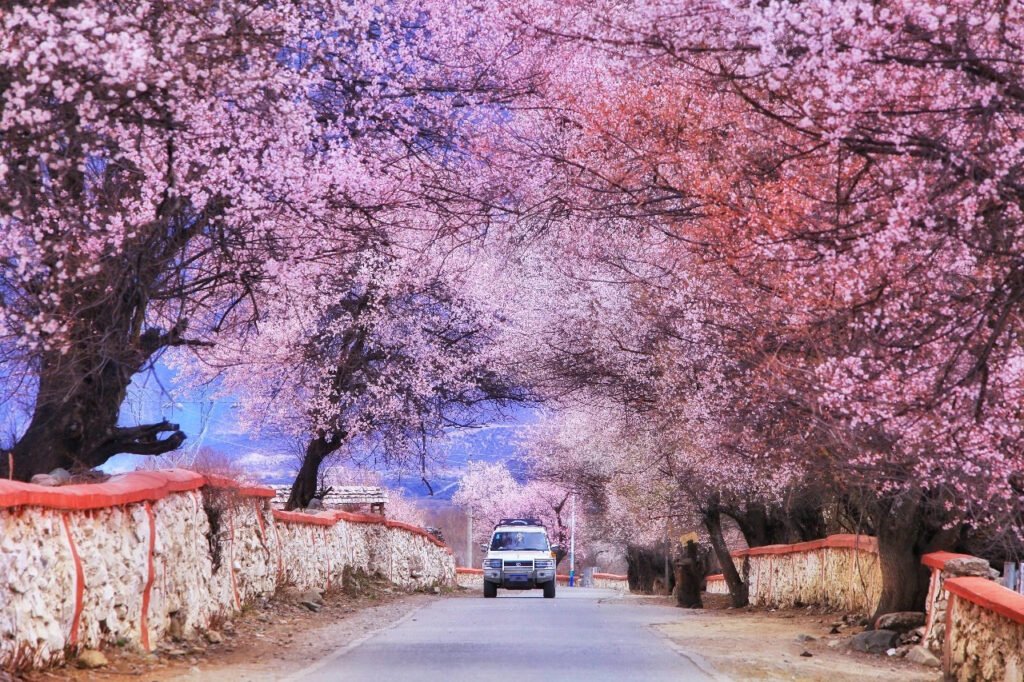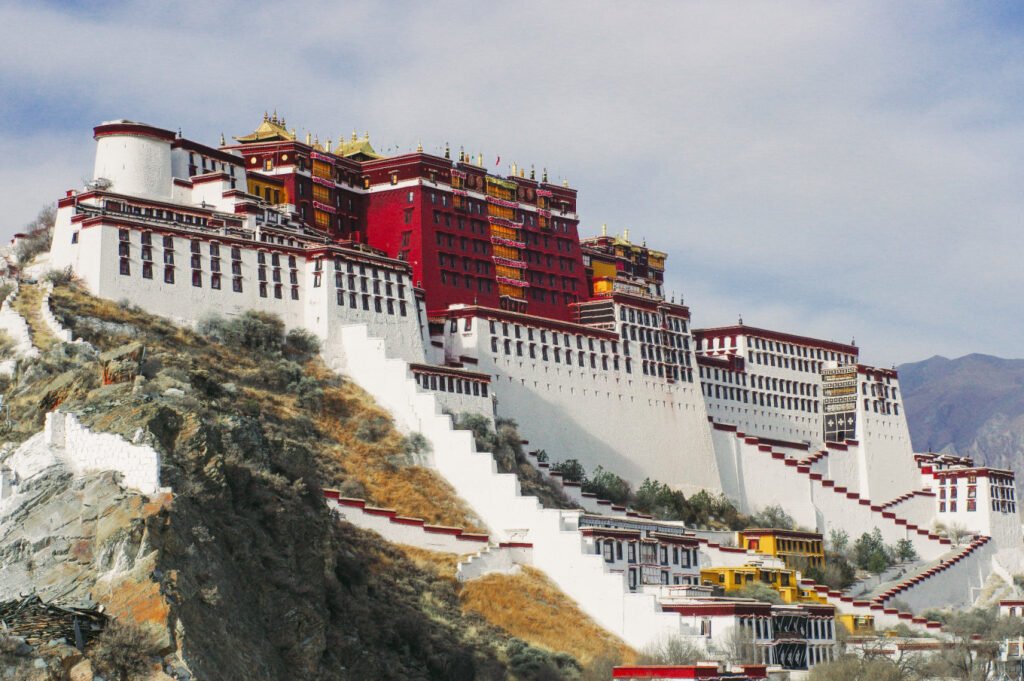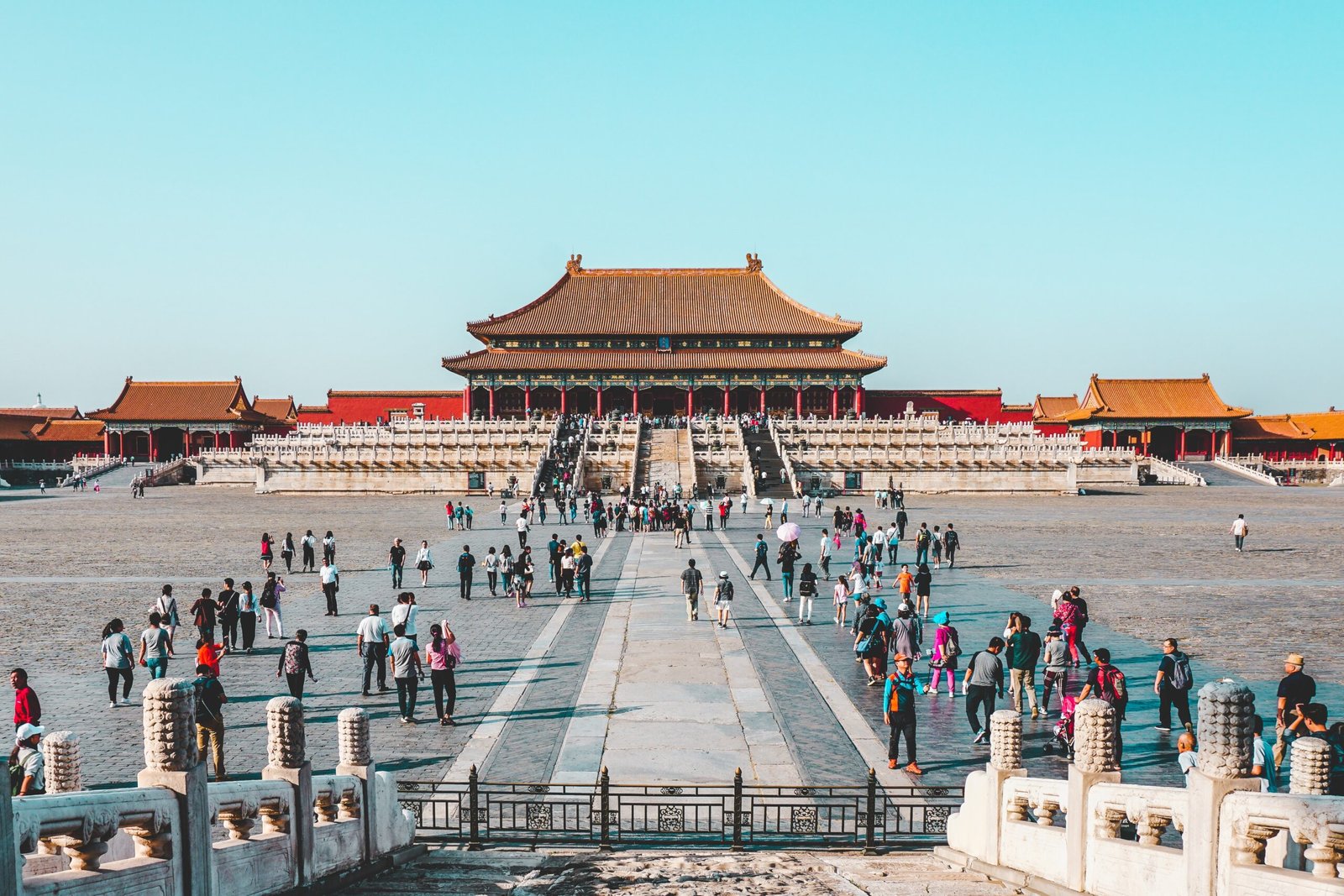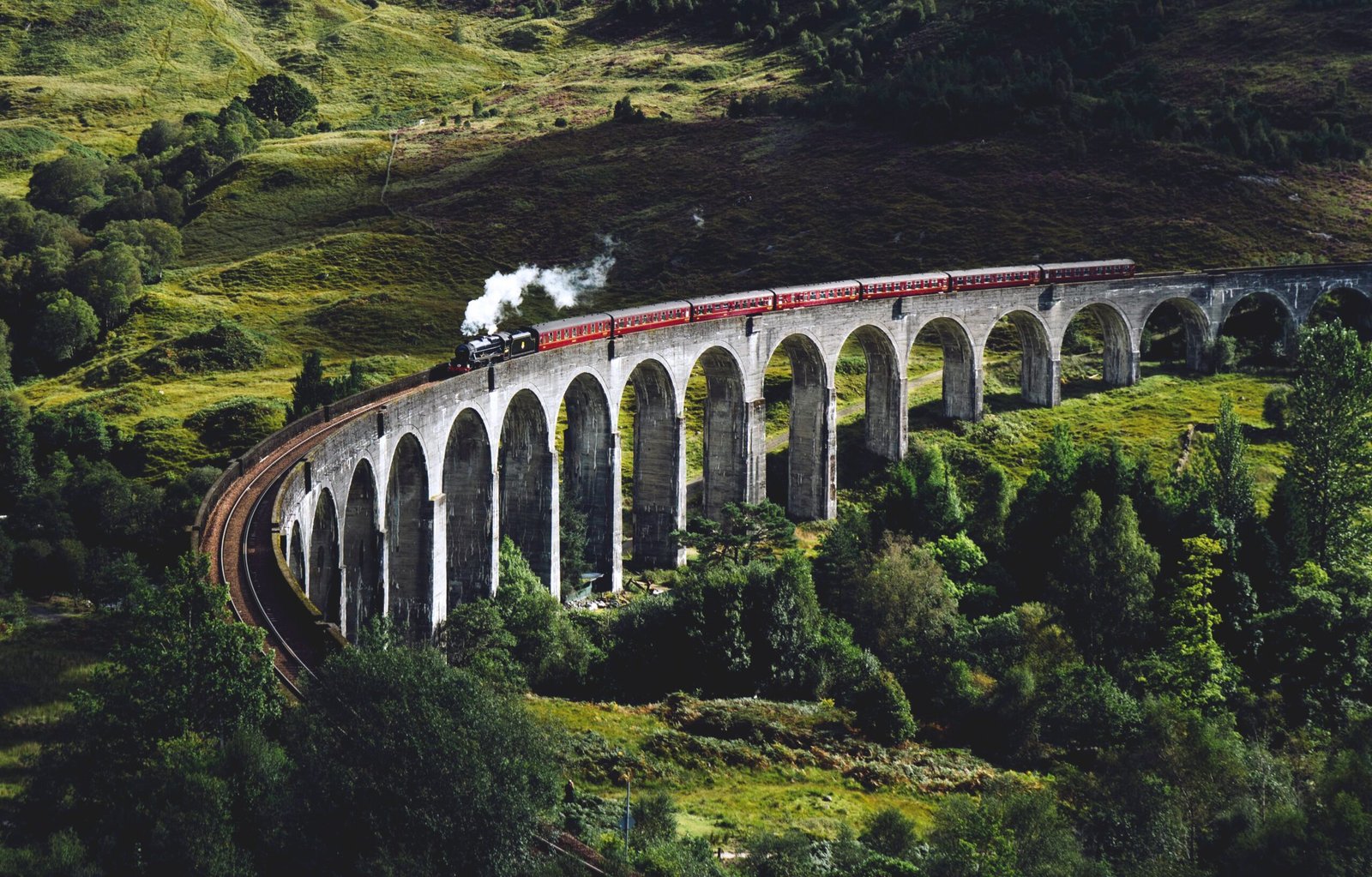Embark on an unforgettable journey through the heart of China and Tibet with our 18-day classic tour from Chongqing to Everest and Kailash. This carefully curated itinerary takes you on a scenic route, allowing you to witness the breathtaking beauty of the Himalayas, explore ancient temples, and immerse yourself in the rich cultural heritage of the region.
Main Itinerary of 18-day tours from Chongqing to Lhasa, Everest, Kailash
Day 1: Arrival in Chongqing
Your journey begins upon arrival at Chongqing airport or railway station, where a local guide will welcome you and escort you to your hotel in Chongqing. The remainder of the day is yours to relax or explore.
Suggested Sightseeing and Dining for Day 1:
- Explore Jiefangbei Square, Chongqing’s bustling “Times Square.”
- Savour the famous hot pot on Jiefangbei Pedestrian Street.
- Marvel at the breathtaking night view of the Yangzi and Jialing rivers from E’ling Park.
Enjoy an overnight stay in Chongqing.
Day 2: Chongqing Tour – Museums, Ancient Towns, and Night Views
The day’s adventure starts at the Three Gorges Museum. Here, you’ll learn about Chongqing’s history, view artefacts like statues and ceramics, and discover the impacts of the Three Gorge Dam. The museum also offers insights into the region’s minority cultures through historical photographs and rescued relics.
Post-lunch, the tour heads to Ciqi Kou (Porcelain Village). Wander through this ancient town with its traditional cobbled streets and unique hilly architecture. Visit shrines, temples, souvenir shops, and enjoy local food stalls. Don’t miss the charming riverbank and ferry boats at the town’s end.
The evening is reserved for a visit to Hongya Cave. Admire the neon-lit beauty of the cave and the Qiansimen Jialing River Bridge. Experience Chongqing’s vibrant nightlife with hot pot, snacks, and live street performances, all set against the backdrop of the Jialing River and bustling boats – a scene reminiscent of “Small Hong Kong.”
Conclude your day with an overnight stay in Chongqing.
Day 3: Exploring the Dazu Rock Carvings
The tour continues with a visit to the Dazu Rock Carvings, situated about 108km from downtown Chongqing. Recognized as a World Heritage Site and one of the world’s most remarkable grottoes, these Buddhist sculptures date back to the 7th century. Showcasing influences from Buddhism, Confucianism, and Taoism, they offer a profound insight into religious art and philosophy. Highlights include the sleeping Buddha and narratives of Buddha’s life, providing a deep understanding of Chinese philosophical schools.
Spend another night in Chongqing.
Day 4: Journey to Lhasa and Acclimatization
Your journey takes a significant turn as you fly from Chongqing to Lhasa in the morning. Upon arrival, a local guide will assist you to your hotel. The remainder of the day is reserved for rest, allowing your body to acclimate to Lhasa’s high altitude.
Travel Tips: Avoid strenuous activities upon arrival in Lhasa. Instead, focus on resting, avoiding showers, alcohol, and overeating. Drinking more water and eating vegetables are recommended for better acclimatization.
Overnight stay in Lhasa.
Day 5: Discovering Lhasa – Potala Palace, Jokhang Temple, and Barkhor Street



The fifth day introduces you to Lhasa’s wonders. Start with the majestic Potala Palace, the winter residence of the Dalai Lama since the 7th century. Explore the gilded burial stupas of former Dalai Lamas and the meditation Cave of the 33rd great king of Tibet.
Post-lunch, the tour leads to Jokhang Temple, a significant site founded in the 7th century. The temple houses the venerated statue of Buddha Sakyamuni at twelve years old. Surrounding the temple is Barkhor Street, perfect for kora (a religious circuit), interacting with pilgrims, and shopping for souvenirs.
Another night will be spent in Lhasa.
Day 6: Lhasa’s Spiritual Heritage – Drepung and Sera Monastery
The day begins with a visit to Drepung Monastery, one of Tibet’s “great three” Gelug monasteries. Founded in 1416, it once served as the Dalai Lama’s residence before the move to Potala Palace.
In the afternoon, the tour takes you to Sera Monastery, another of the “great three” Gelug monasteries, established in 1419. A highlight is the Monks’ debate, a unique and engaging religious practice, usually held between 3 and 5 pm.
The day ends with an overnight stay in Lhasa.
Day 7: Journey from Lhasa to Yamdrotso Lake and Shigatse
The seventh day takes you through the verdant Nyangchu Valley towards the breathtaking Yamdro tso Lake and the Karo-la Glacier at 4960 meters. Your destination is Gyantse, a traditional Tibetan town. The day’s highlights include the stunning Yamdro Lake, resembling a deep blue scorpion, and the impressive Kubum Monastery with its 35m-high chorten. The journey concludes in Shigatse, Tibet’s second-largest city.
Overnight stay in Shigatse.
Day 8: Shigatse Exploration and Drive to Tingri
In Shigatse, visit the renowned Tashi Lhunpo Monastery, home to the world’s largest Jampa (future god) statue. The monastery is the traditional seat of successive Panchen Lamas. Then, drive to Sakya County to explore the unique Sakya Monastery, known for its distinct practices, including its leaders wearing white cassocks, marrying, and having children. Journey over the high Gyatso-la pass (5200m) en route to Tingri, gateway to the Himalayan Nature Reserve.
Overnight stay in Tingri.
Day 9: Tingri to Rongbuk Monastery and Everest Base Camp
The trip from Tingri to Rongbuk Monastery and Everest Base Camp (EBC) takes 2-3 hours, covering 90km of new winding mountain roads. Enjoy the spectacular Himalayan scenery, passing grasslands, torrents, and towering mountains. On a clear day, witness the panoramic view of the Himalayan range, including peaks over 8000m like Lhotse, Everest, Cho Oyu, and Makalu, and the golden summit of Everest at sunset.
Overnight stay in Rongbuk Guest House or a local Tibetan Tent.
Day 10: Rongphu Monastery to Everest Base Camp to Saga
The journey takes us from Rongphu Monastery to Everest Base Camp, then onto Saga County via the old Tingri road. En route, marvel at the views of Mt. Everest and Mt. Shishapangma, standing at 8012m. The journey continues alongside the Himalayas and the Anapurna ranges of Nepal, through the stark landscapes of Digur Tang with its dunes and snow-peaked vistas. A key highlight is the Pelkhu Tso Lake, a stunning blue expanse at 4600m. The day concludes in the small town of Saga.
Overnight at a local guesthouse in Saga.
Day 11: Saga to Lake Manasarovar to Darchen (Mount Kailash)
The next leg moves towards Drongpa County, the source region of the Brahmaputra River, before detouring to Lake Manasarovar, a sacred site in Tibetan and Hindu traditions. Here, witness flocks of swans, pilgrims performing rituals, and the breathtaking backdrop of snow-capped mountains. The day ends in Darchen, a small town at the base of Mt. Kailash, where preparations for the upcoming trek are made.
Overnight at a local guesthouse in Darchen.

Day 12: Trek from Darchen to Drirapuk
The trek around Mt. Kailash commences from Darchen, leading to Drirapuk. After a short bus ride to Sarshung, the journey continues on foot through nomadic plains to Drirapuk Monastery. The accommodations here are basic but somewhat better than others in the area.
Overnight at the tent guesthouse of the monastery.
Travel Tips: The trek around Mt. Kailash is challenging, with high altitudes and basic accommodations. A sleeping bag is essential.
Day 13: Trek from Drirapuk to Dzultripuk
The second day of the trek is the most challenging, ascending to the Dolma-la pass at 5630m. After descending to the Lhachu valley floor, the trek continues to Dzultripuk, known for Milarepa’s miracle cave. Accommodations here are limited and basic.
Overnight at the tent guesthouse of the monastery.
Day 14: Concluding the Trek from Dzultripuk to Darchen
On this final day of the trek, you’ll visit the revered Milarepa’s Cave, a site of great spiritual significance. Following this, a three-hour walk leads you out of the valley to where transportation awaits to take you back to Darchen.
Overnight stay in a local guesthouse in Darchen.
Day 15: Returning Journey from Darchen to Saga
Today marks the beginning of your return journey as you retrace the route back to the town of Saga, reflecting on the many experiences of your trek.
Days 16-17: Drive from Saga to Shigatse and then to Lhasa
Over the next two days, you’ll journey from Saga, making your way to Shigatse, and then proceed to Lhasa. This drive takes you through varying landscapes, offering a final glimpse of the region’s natural beauty.
Day 18: Farewell and Departure
Your remarkable journey concludes on this day. You will be escorted to Gonggar Airport or the Tibet Railway Station for your departure, marking the end of an unforgettable adventure through the awe-inspiring landscapes and spiritual sites of Tibet and Nepal.
Service Guide for the Tibet and Nepal Tour
Services Included:
- Tibet Travel Permit and Necessary Permits: All permits required for travel in Tibet.
- Entrance Fees: Tickets for all tourist sites listed in the itinerary.
- English-Speaking Tibetan Tour Guide: Personal, knowledgeable guide for the entirety of the tour.
- Transportation: Comfortable, clean, and safe vehicle with a reliable Tibetan local driver; vehicle type varies from 4WD Land Cruiser to minibus based on group size.
- Accommodation: All lodging as per the itinerary. Options range from luxury 5-star hotels to budget hostels, guesthouses, or tents. Accommodation preferences should be specified when enquiring.
- Domestic Flights/Trains: As listed in the itinerary.
- Meals: As specified in the itinerary.
- Tourist Accident/Casualty Insurance: For peace of mind during your journey.
- First Aid Kit: For emergency use.
Services Excluded:
- International Flights: To and from China.
- Chinese Visa: Assistance can be provided for the visa application process.
- Additional Domestic Flights/Trains: Not listed in the itinerary. Booking services are available at discounted prices.
- Meals: Those not specified in the itinerary; cost approximately USD 3-15 per meal in the Tibet Autonomous Region.
- Tips and Gratuities: For guides and drivers.
- Personal Expenses: Such as laundry, phone calls, snacks, soft drinks, and alcoholic beverages. It is advised to avoid alcoholic drinks during the trip.
- Optional Tour Activities: Any personal activities or expenses not included in the tour itinerary.


